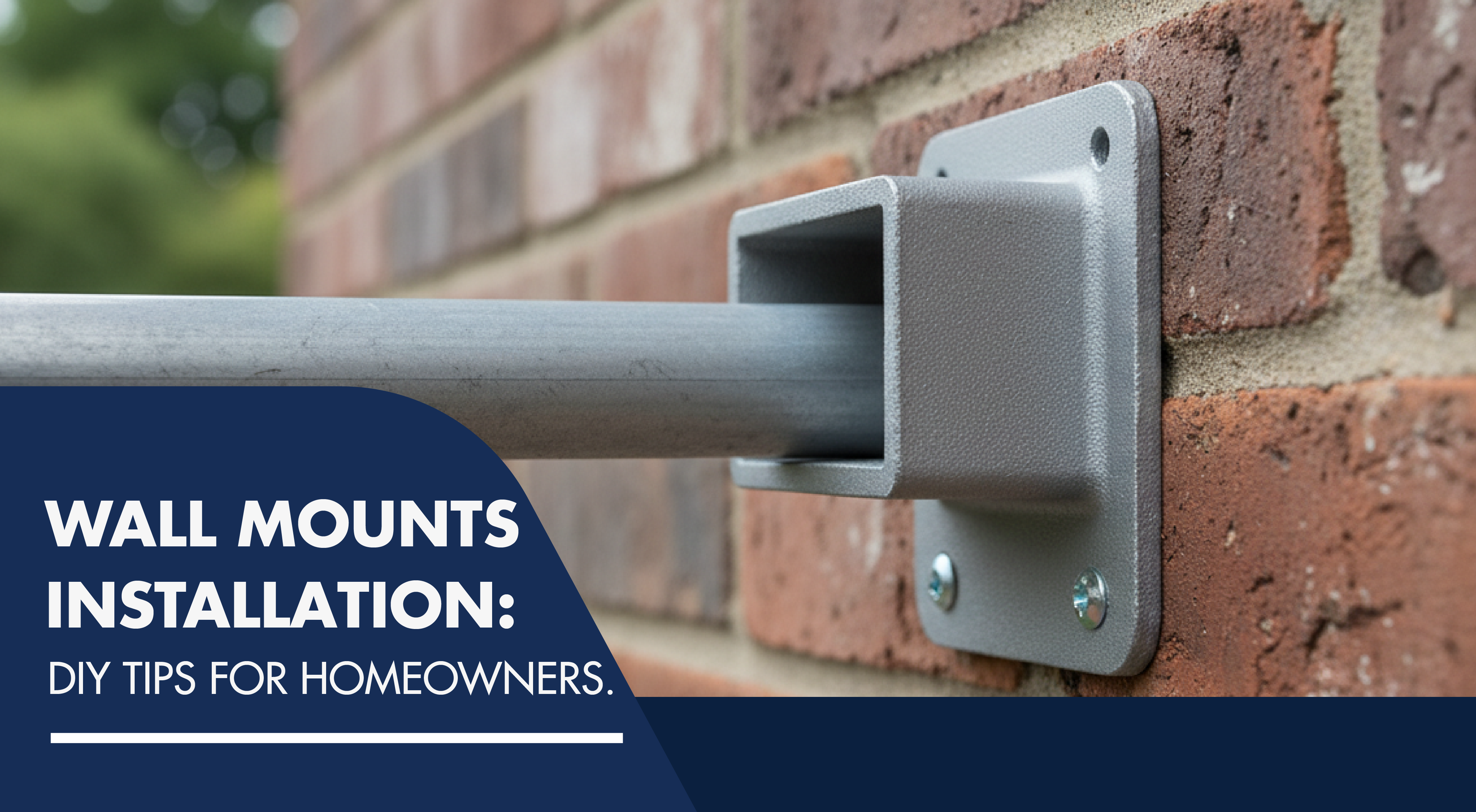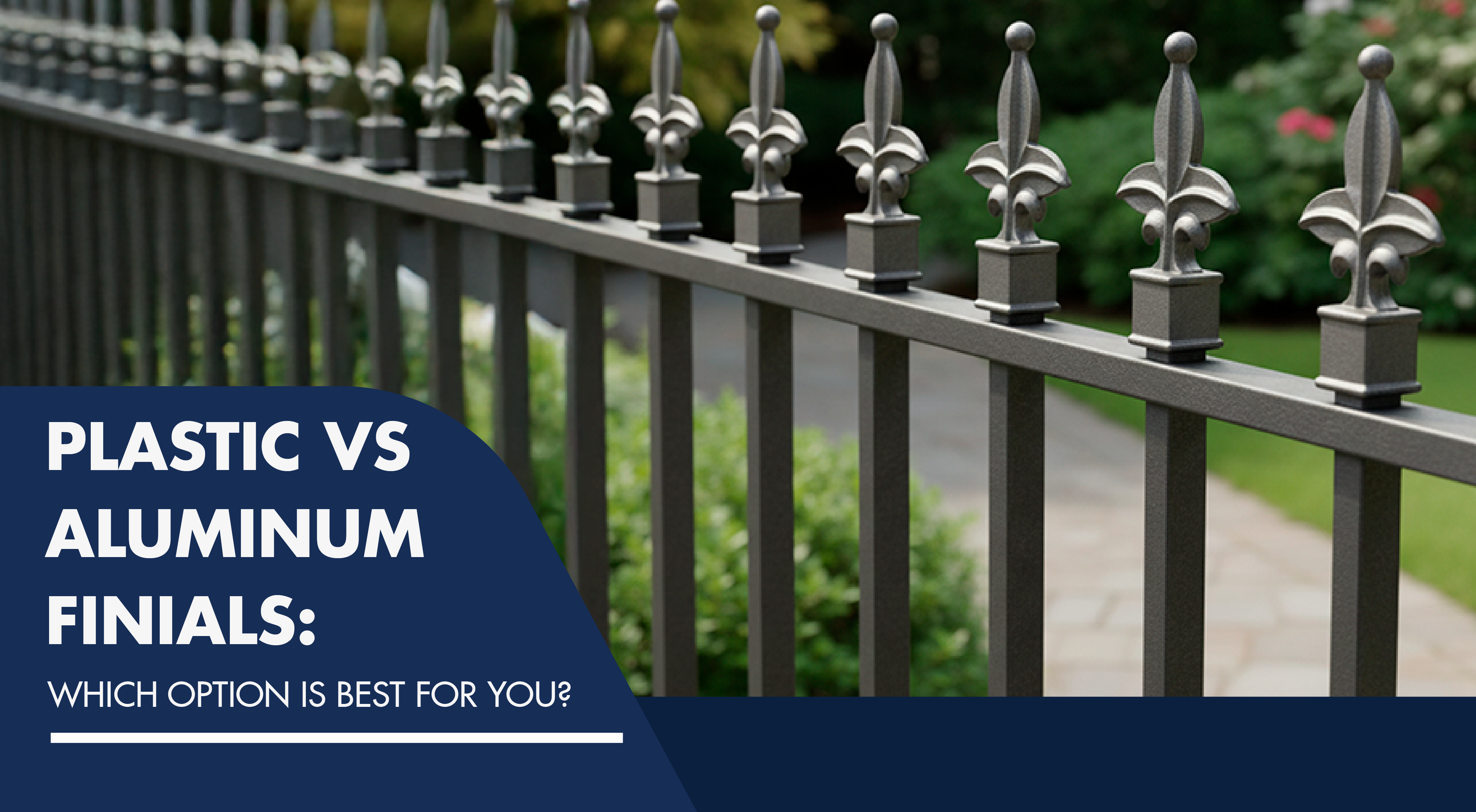With the addition of a railing, even the most ordinary deck, porch, or stairwell can be transformed into an attractive, functional, and secure space. It provides a clear outline while also protecting the people in the area.
Adding a railing to your staircase or balcony may dramatically change its look and allow you to express your personal style via your home's design. For centuries, railings have been an integral aspect of building construction; this article will help you select the ideal railing for your home. Don't forget to choose the right Hardware to install it.
What is the difference between a handrail and a railing?
Choosing between a Handrail and a Railing It's common for people to mistake the handrail and railing of a staircase. The section of a staircase that people grasp for stability while climbing or descending is called a handrail or banister.
Stability and a steady line of sight down the stairs are necessities for the railing. You may choose from several different materials while crafting a railing. On the open end of a stairway, it can be mounted to the wall, protrude from the stair rail, or rest atop the balusters (vertical posts).

A railing is a protective barrier at the edge of a staircase that stops people from falling off. The strength of a railing determines how well it will withstand a fall or push without breaking. Balustrades, which are made up of a series of vertical posts, are one type of railing; more elaborate railings, such as those constructed of cable, are another.
How to Determine Which Handrail Material Is Right for You
The use, location, and desired aesthetic of the handrail all play a role in determining the material that should be used. Handrails from Fittingsplus are available in a number of different finishes, ranging from cool metallic choices to cozy wooden railings.
Whether you choose to install our aluminum handrails indoors or outdoors, the finish features a glossy sheen and is guaranteed not to flake or chip under any circumstances. Choose our Wood railings for gorgeous wood handrails that require 50 times less wood than traditional solid wood counterparts without sacrificing any of that magnificent wood grain look. These handrails are also available in a variety of styles and sizes to meet your specific needs.

Check our Decorative Finials!
Selecting a material for handrails that is not only very durable but also resistant to rust and simple to clean is suitable for commercial applications in which the handrails will see a high volume of use.
However, in domestic applications, such as private residences, handrails may not receive as much usage, thus it may be appropriate to use a material that is not as robust, especially if the design is taken into consideration.
If the handrail is going to be installed outside, it is absolutely necessary for it to be durable in order to get the most use out of it. You can ensure that the handrail will survive for a long time and continue to look wonderful by selecting a material that is resistant to the effects of the sun, wind, rain, and snow.
Materials
Wood
Wood is an excellent material for a handrail because it is sturdy, long-lasting, and has a classic appearance that lends itself well to being included in a wide variety of architectural styles.
On the other hand, over time it will wear out and perhaps split or splinter, so it will need to be maintained. Before they can be utilized, many wood goods need to be sanded and coated. Additionally, wooden handrails need to be refinished frequently if they are used in moist situations or when they are exposed to the elements.
Handrails made of wood may have trouble meeting continuous handrail regulations, particularly if the staircase in question has non-standard angles, winding steps, or a joggle that would need a bend in the railing. Handrails of longer lengths are more likely to warp, and wall returns are harder to execute with this material because of its lack of elasticity.

In addition, wood is frequently used for decorative handrails. Since the profile of decorative handrails made of wood typically facilitates a pinch grip instead of a power grip, decorative handrails made of wood are less safe than handrails made with a round profile that is designed for a power grip.
Our Wood handrails offer a number of solutions to problems that are common with classic or ornamental wood railings. These handrails are constructed using the same robust aluminum that we use for our metal railings. They are then covered in a very thin coating of authentic red oak or black walnut that does not warp in any way. With the help of this cutting-edge technology, you may enjoy the time-honored appeal and convenience of wood railings without any of the drawbacks.
Steel with a wrought texture
Handrails made of wrought iron contribute to the visual appeal of a structure while also offering the practical benefit of a railing.
Because the material is flexible, it will not do any damage to the stairs in the event that it heaves or bends. Unfortuitously, wrought iron is vulnerable to rust, and this sensitivity is compounded by the rough finish, which makes it possible for rust to develop in the microscopic pits on the surface.
Wrought iron is not an appropriate material for an ADA-compliant handrail because its profile is too narrow to offer an effective handrail grip. This is another reason why wrought iron is not an acceptable material. The weight of the material would make it impossible to create a profile that is ADA compliant since it would be too heavy.

Stainless Steel
Stainless steel is not only easy to clean but also long-lasting and sturdy. When used as a material for handrails, however, it may be rather expensive, particularly if non-standard angles are required to be cut. In terms of aesthetics, it imparts a contemporary and industrial look that, despite the fact that it is quite appealing, does not go well with all different kinds of decorating styles.
Aluminum
Aluminum railings are not prone to rust or corrosion, which makes them an option that is sturdy and will endure for a long time. Due to the material's ability to withstand heavy foot traffic over an extended period of time, it is ideally suited for use in commercial projects that will see extensive use.
Depending on the railing's form and surface, the aluminum handrails may also make a home's interior look more contemporary. One other advantage of aluminum railings is that they can be quickly cleaned and sterilized by wiping them down with a damp cloth.

What are the Requirements for Handrails?
Industrial versus Domestic
"Commercial" is a term for anything related to business or industry, as well as anything public or open to the general public, such as the common areas in apartment complexes. Most places may be classified as one of these.
The term "residential" is strictly limited to single-family homes, duplexes, and individual units of multi-family buildings. When it comes to things like lobbies and shared laundry rooms, multi-unit, and high-rise residential buildings must follow the same standards as businesses.
You can also read: Types of Fencing Brackets
Construction Code vs. ADA Standards
Construction, remodeling, and inspections for both homeowner's insurance and property value all necessitate compliance with applicable building regulations. Each state and municipality is responsible for adopting and enforcing its own set of such regulations.
Each jurisdiction generally adheres to International. In the construction industry, the International Code Council's (ICC) publications are the gold standard. The Justice Department patrols the country to ensure compliance with ADA requirements in all public and private establishments. Existing buildings are nonetheless subject to ADA standards even if they aren't required to meet the current building code.
While safety is the primary priority of building codes, accessibility is the primary concern of the ADA Standards. There is a lot of crossovers because handrails are useful for both. Most of the ADA handrail standards, plus some extra ones for strength and usefulness, may be found in commercial construction regulations. Although not as strict, many of the ADA requirements are already part of residential building rules.
Pick a Handrail That Is Both Robust and Stylish
Handrails provide support for anybody moving from one location to another, regardless of whether they are installed in a residential or business setting, on a staircase or in a corridor, at a home, or in an elementary school.
We frequently aren't even aware of how much handrails affect us in our day-to-day lives, despite the fact that they play an important role in helping a loved one age in place, giving help on a tricky walkway, as well as creating a secure way to climb stairs. Handrails also play an important role in helping a loved one maintain their independence.
The beauty of the good design is in the fact that it blends in with the environment, allowing us to make use of it without even being aware of how much we rely on it.

The assistance that is required to negotiate slippery circumstances and slopes may be obtained by the installation of handrails on ramps, staircases, hallways, and bathrooms, as well as on ramps. The installation of tasteful handrails may not only make your home more aesthetically pleasing but also make it easier for you and your loved ones to walk around securely throughout the day.
Fittingsplus makes it simpler than ever before to construct a handrail that is unique to your space. We offer our handrails for sale in a variety of configurations, including whole kits as well as individual pieces, and our customer service representatives are standing by to answer any inquiries you might have











